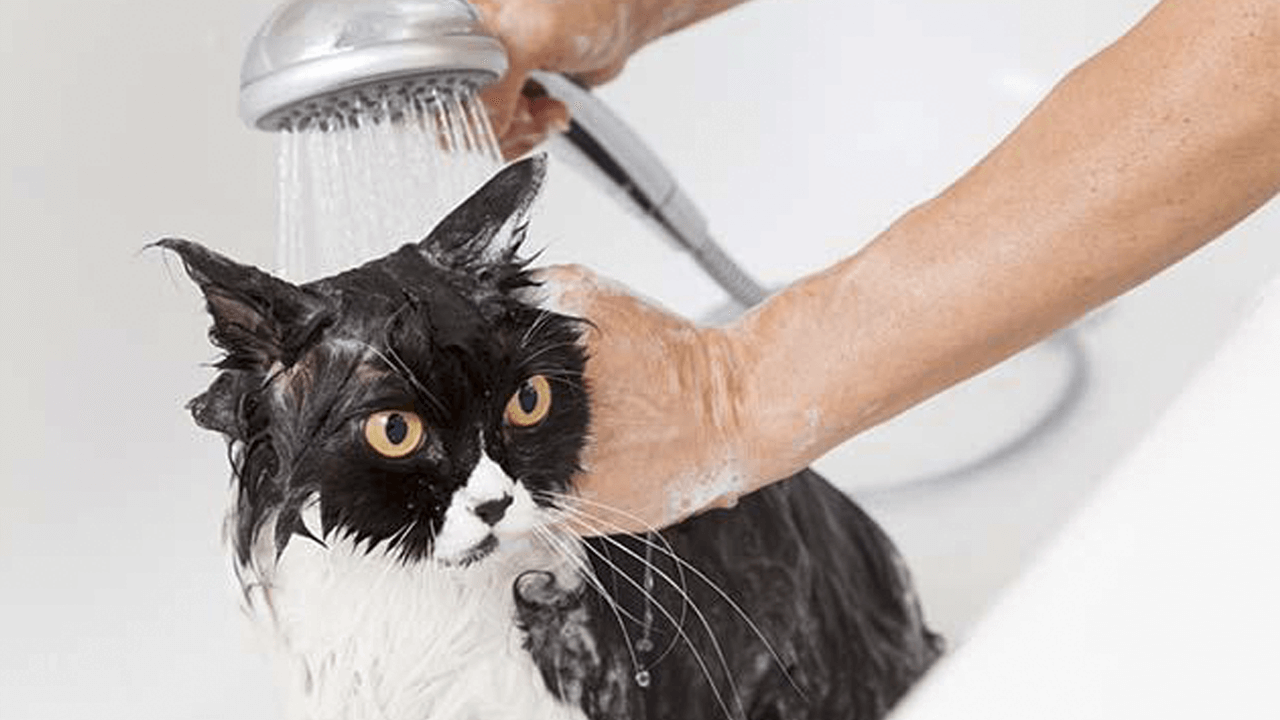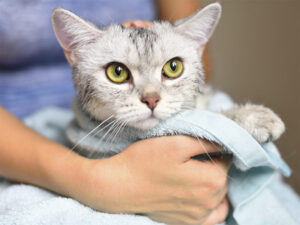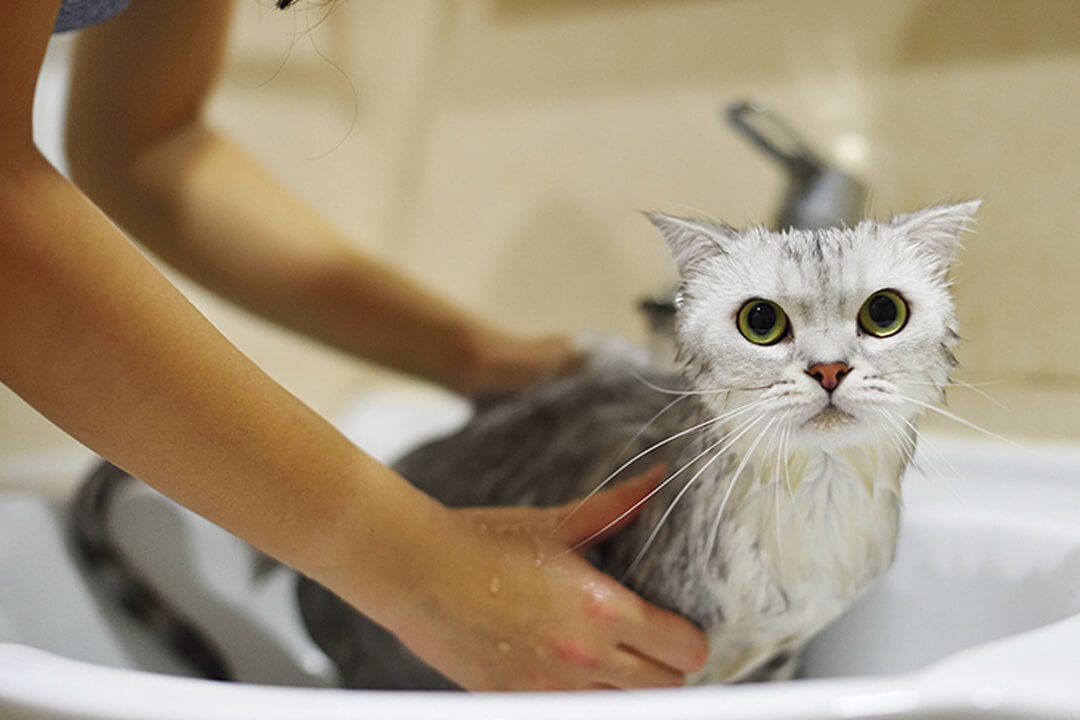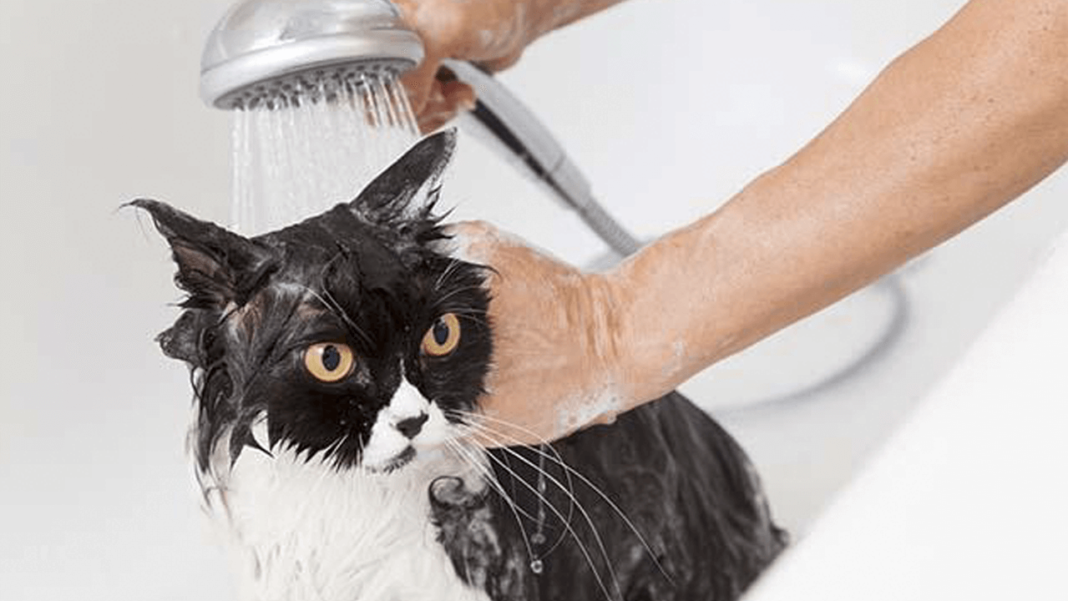

Cats are known for their grooming habits. Their teeth, paws, and tongues can usually able to keep themselves fresh and clean without any external intervention. Cats don’t usually need a bath, but there are some exceptional circumstances.
However, sometimes your cat needs help to keep it clean. If they’re wrapped in something that they cannot wash off themselves, or if they have long hair that has become matted, it might be a good idea to bathe him.
Pre-bathing Prep
Before starting, you need to brush the cat to remove any knots or tangles, especially if the cat is a long-furred breed.
Set the temperature of the water to heat up and run it through the showerhead with a medium-level spray.
Before You Bathe Your Cat

Once you start bathing your cat, everything is within easy reach. You’ll need:
- A small cloth to clean the face
- Rubber gloves
- A cat conditioner if required, don’t use human hair conditioner
- Different towels to help her dry and clean her off
- Use cat or kitten shampoo, they’re available from most pet stores and veterinarian
- A brush to help remove matts and knots
- A large plastic bucket, sink, or bath to use as a cat bath
- Cotton balls to clean the ears
- Never use human shampoo, because it’s inappropriate for cat skin and hair due to the difference in pH levels
Most cats don’t like baths and they can get much stressed. If you can, just clean cleanse the isolated area, rather than getting their whole body wet.
Bathing Your Cat

- It’s much easier to wash your cat in a kitchen or bathroom sink than to bend over the bathtub. The following is a step-by-step procedure for bathing your cat.
- Fill the sink with about 2 or 3 inches of lukewarm water.
- Wet the cat from shoulders to tail and apply shampoo.
- Just like your own rinse, hair, and lather thoroughly.
- Most cats don’t like getting water on their faces, so use a damp washcloth to gently clean your cat’s head.
- Use a cotton ball to clean inside the cat’s ears. Never put anything in your cat’s ears (include Q-Tip).
- After thorough rinsing, lift the cat onto a large towel and fold it around her.
- Rub as much water as possible from her fur.
- Longhaired cats may require the use of a blow dryer, but only if the noise doesn’t scare them.
- Take care to avoid her eyes and nose.
When bathing your cat, remember a few things:

- Use a sink – The best option is a sink due to the smaller size compared to a tub, and the water should be very shallow to minimize the fear of the water.
- Maintain a comfortable water temperature – The water must be warm (between body and room temperature), but neither hot nor cold. Filling the sink too high or using cold or hot water can make a negative experience, which is difficult when most cats don’t like baths or water that much at first.
- Dry it with a towel (or a blowdryer!) – Dry the cat with a towel to remove any excess water.
- Brush it after it’s dry – They’ll also need a good brushing or combing after you’ve dried them, to help keep them from getting mats and tangles.
